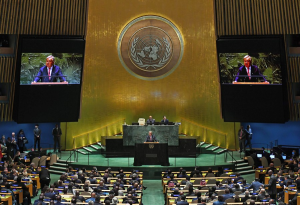The largest health care workers’ strike in the U.S. history entered its second day on Thursday, arousing concerns over the shortage of healthcare staff.

More than 75,000 workers with the California-based healthcare organization Kaiser Permanente stood on the picket lines across the country, demanding better pay and benefits.
They work at hundreds of facilities across the U.S. states of California, Colorado, Washington and Oregon, and are represented by a coalition of unions.
However, negotiations between union leaders and Kaiser executives broke down on Wednesday due to a dispute over pay increase.
The coalition also demanded ways to fix a staff shortage that workers have long complained about.
The three-day strike ends on Saturday morning. But the coalition said “another longer and stronger” strike will be staged next month if a new contract agreement can’t be reached by then.
Kaiser admitted the staff shortages in its statement, saying it’s a problem that “every health care provider in the nation” has been facing.
The organization’s data confirm a chronic trend of staff shortages in the U.S. healthcare industry, which was exacerbated by the pandemic.
In January, more than 7,000 nurses at two major New York City hospitals went on strike, complaining that staffing shortages led to burnout.
From the start of 2022 through August this year, about 33 percent of the work stoppages occurred in the healthcare industry, compared to 29 percent in 2019, according to data from the Bureau of Labor Statistics.
The shortage of healthcare staff was the greatest risk to patients in 2022, according to a report by the health care safety organization ECRI.
“Due to staffing shortages, many patients are waiting longer for care, even in life-threatening emergencies, or simply being turned away,” said the report.
Labor advocates said the shortage of healthcare workers had created a vicious cycle. As the workers on shift wind up doing more work, they are likely to get burnt out and leave the industry, thus worsening the problem.
California hospitals have also reported “persistent operational challenges and financial headwinds” into the third year since the start of the pandemic, according to a report by California Health Care Foundation released in May.
Nursing vacancy rates among local hospitals exceed 30 percent, while the pre-pandemic rate was 6 percent, according to data from the Hospital Association of Southern California.
ECRI has warned that there’s no easy fix to the current staff shortage, which “could become the new normal for the foreseeable future.”
The nursing profession in the United States continues to face shortages due to numerous causes, including a lack of potential educators, high turnover, and inequitable workforce distribution, according to a recent study published by National Library of Medicine.

